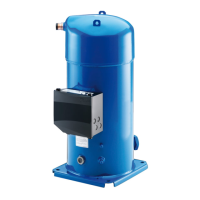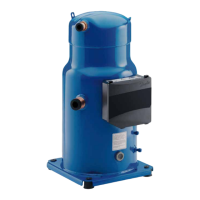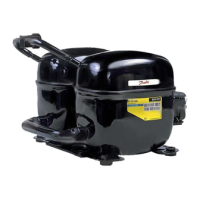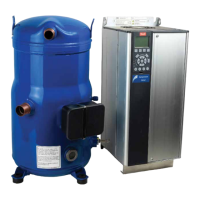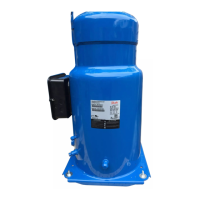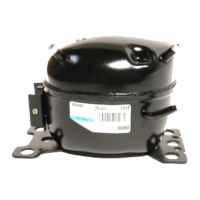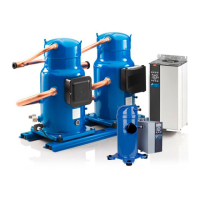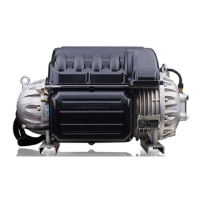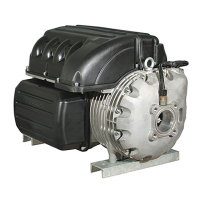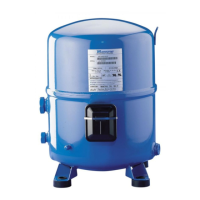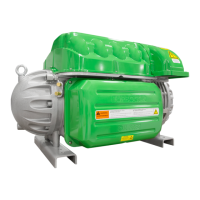30
FRCC.PC.007.B8.02
Application guidelines
System design recommendations
A LLSV may be used to isolate the liquid charge
on the condenser side, thereby preventing
against charge transfer or excessive migration to
the compressor during o -cycles. The quantity of
refrigerant on the low-pressure side of the system
can be further reduced by using a pump-down
cycle in association with the LLSV.
Liquid line solenoid valve
(LLSV)
Pump-down cycle A pump-down cycle represents one of the most
e ective ways to protect against the o -cycle
migration of liquid refrigerant. Once the system
has reached its set point and is about to shut
o , the LLSV on the condenser outlet closes.
The compressor then pumps the majority of
the refrigerant charge into the condenser and
receiver before the system stops on the low
pressure pump-down switch. This step reduces
the amount of charge on the low side in order to
prevent o -cycle migration. The recommended
low-pressure pump-down switch setting is 1.5
bar below the nominal evaporating pressure.
It shall not be set lower than 2.3 bar(g). For
suggested wiring diagrams, please see section
"Suggested wiring diagrams logic".
In certain conditions, the discharge valve in the
SH090 - 105 - 120 - 140 - 161 - 184 compressor
may not completely seal and result in compressor
restarts during pump down applications. An
external, non-bleeding check valve may need to
be installed.
Tests for pump down cycle approval:
• As the pump-down switch setting is inside the
application envelope, tests should be carried
out to check unexpected cut-out during
transient conditions (ie. defrost – cold starting).
When unwanted cut-outs occur, the low
pressure pump-down switch can be delayed. In
this case a low pressure safety switch without
any delay timer is mandatory.
Sump heater The surface sump heaters are designed to protect
the compressor against o -cycle migration of
refrigerant.
When the compressor is idle, the oil temperature
in the sump of the compressor must be
maintained at no lower than 10 K above the
saturation temperature of the refrigerant on the
low-pressure side. This requirement ensures that
the liquid refrigerant is not accumulating in the
sump. A sump heater is only e ective if capable
of sustaining this level of temperature di erence.
Tests must be conducted to ensure that the
appropriate oil temperature is maintained under
all ambient conditions (temperature and wind).
Note that below –5°C ambient temperature and a
wind speed of above 5m/second, we recommend
that the heaters be thermally insulated in order
to limit the surrounding energy losses.
Since the total system charge may be unde ned,
a sump heater is recommended on all stand-
alone compressors and split systems. In addition,
any system containing a refrigerant charge in
excess of the maximum recommended system
charge for compressors requires a sump heater.
A sump heater is also required on all reversible
cycle applications.
At initial start-up or after power shortage, it is
recommended to energize surface sump heater
to remove refrigerant 6 hours in advance. A
quicker start-up is possible by "jogging" the
compressor to evacuate refrigerant in the
compressor. Start the compressor for 2 or 3
seconds, then wait for 1 to 2 minutes. After 3 or 4
jogs the compressor can be started.
The heater must be energized whenever the
compressor is o to avoid liquid refrigerant
entering the compressor.
Provide separate electrical supply for the heaters
so that they remain energized even when
the machine is out of service (eg. Seasonal
shutdown).
Surface sump heater accessories are available
from Danfoss (see section "Accessories").
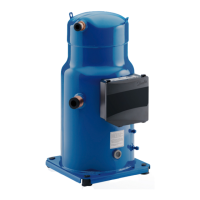
